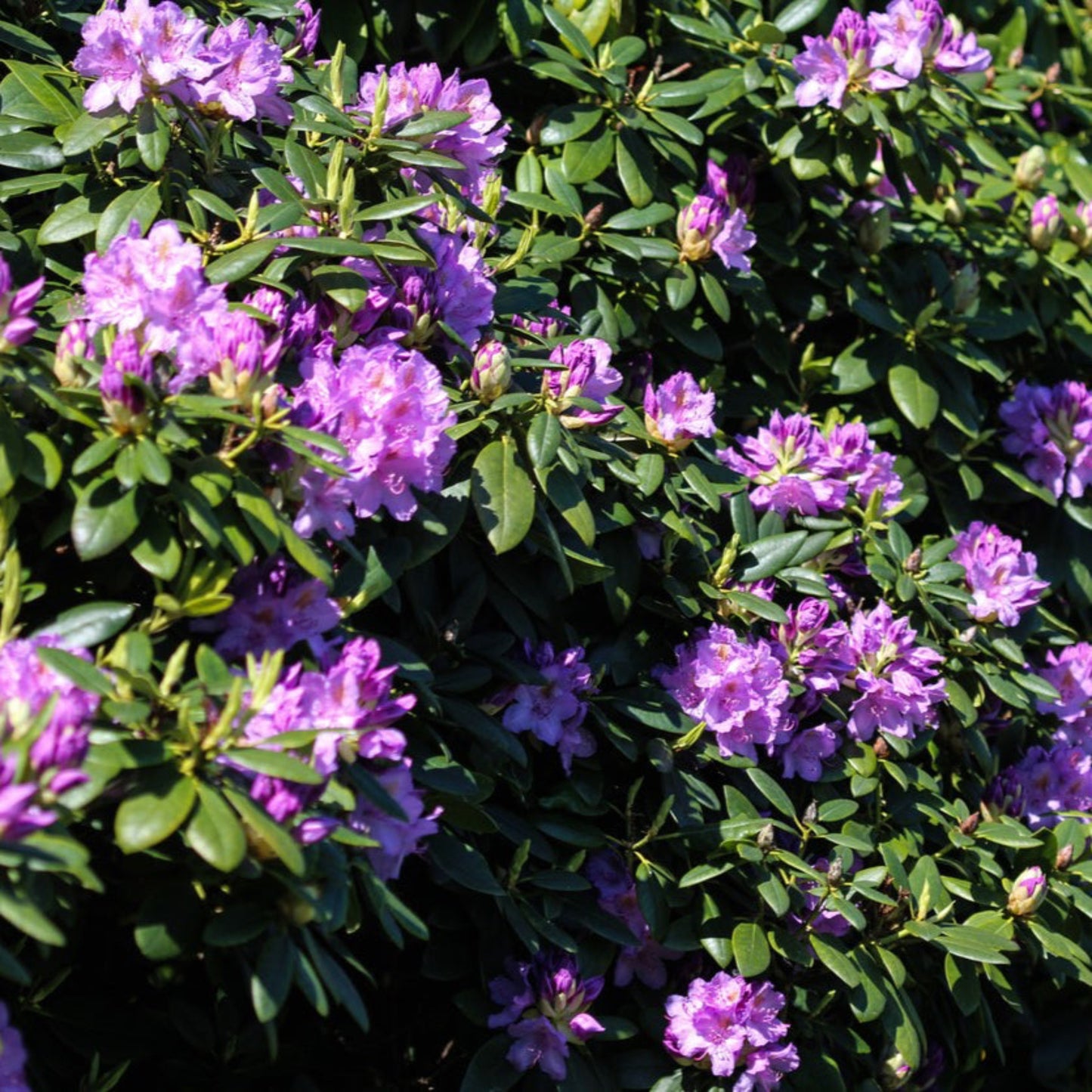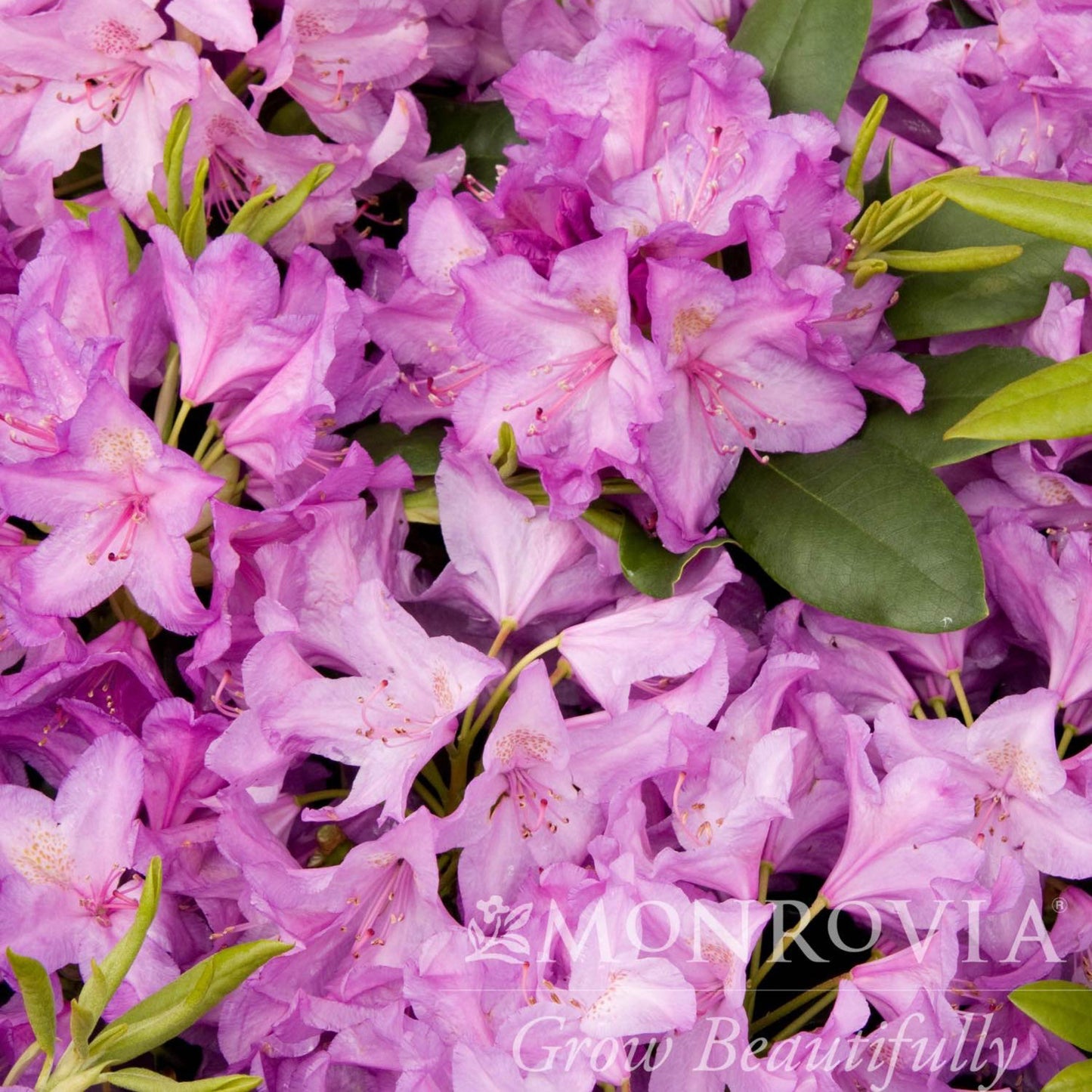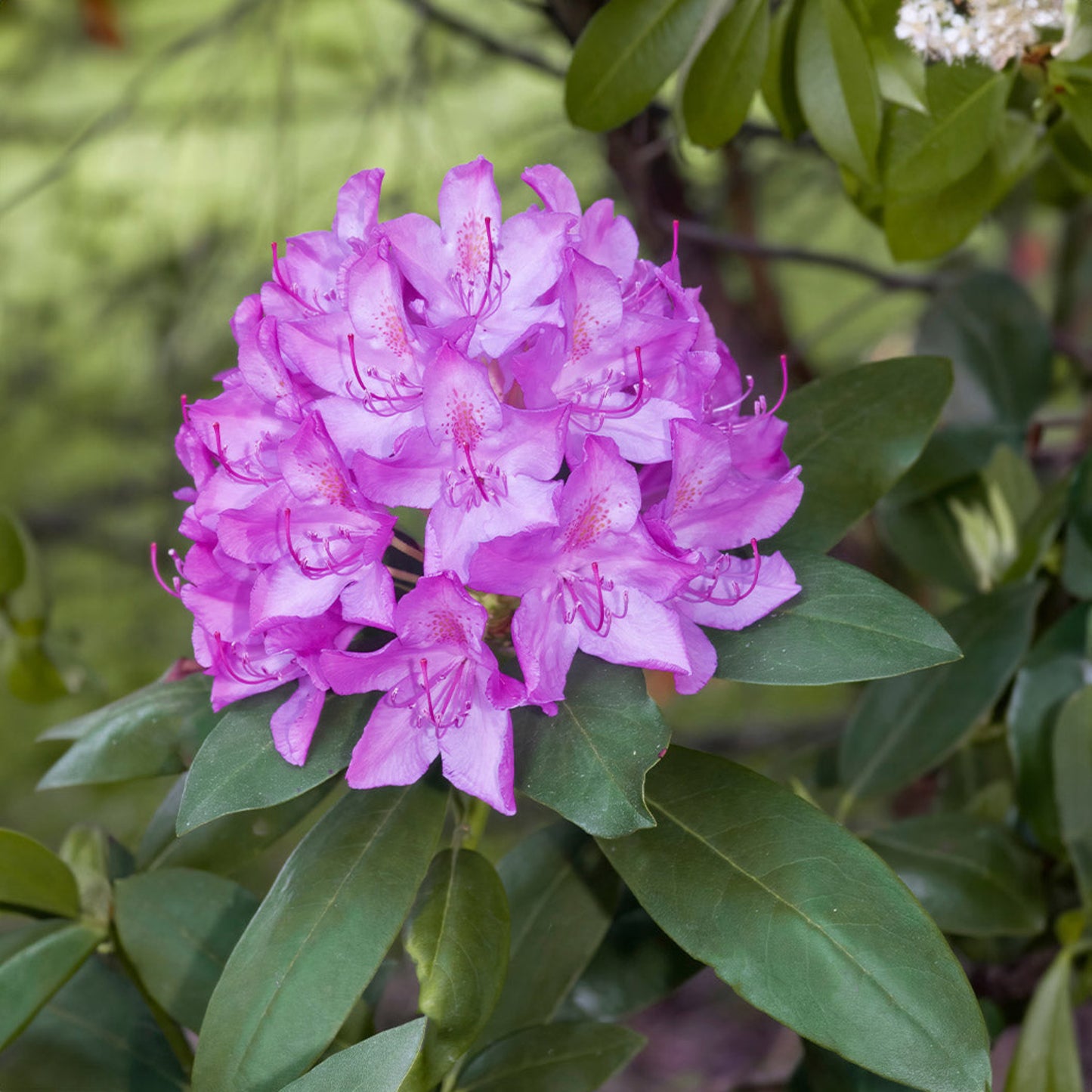Boursault Catawba Rhododendron
Boursault Catawba Rhododendron
SKU:EVE-RHO-LAV-23-3G
Enjoy Lovely Lavender Blooms with the Boursault Catawba Rhododendron
Boursault Catawba Rhododendron is the kind of shrub that makes a lasting impression. With its lush evergreen foliage and stunning lavender-purple blooms, this classic rhododendron delivers a show-stopping display each spring. Whether you're looking to create a natural privacy screen, add a bold accent to your landscape, or attract pollinators, ‘Boursault’ is a reliable, low-maintenance choice.
Why You'll Love It:
- Showy Spring Blooms: Large, trumpet-shaped flowers appear in clusters, drawing in bees and butterflies.
- Evergreen Appeal: Deep green, leathery leaves provide structure and color all year long.
- Cold Hardy & Tough: Thrives in cooler climates (zones 4-8) and stands up to harsh winters.
- Low Maintenance: Once established, it requires little care beyond occasional pruning and acidic soil.
- Great for Privacy: Perfect for hedges, borders, or as a standalone statement plant.
Growing Tips:
Plant in partial shade to full sun, in moist, well-drained, acidic soil. Keep roots cool with mulch and water regularly, especially during dry spells. Prune lightly after flowering to maintain shape.
Add ‘Boursault’ to your garden and enjoy a burst of color every spring—without the hassle of high maintenance!



Product Details
-
Product Category
Flowering Shrubs
-
Product Subcategory:
Rhododendrons
-
Botanical Name:
Rhododendron catawbiense 'Boursault'
-
Does Not Ship To:
AZ, OR
-
Mature Height:
6-10 ft.
-
Mature Width:
6-10 ft.
-
Growing Zone:
4-8 outdoors
-
Indoor Growing:
-
Sunlight:
Full-Part Sun
-
Growth Rate:
Moderate
-
Harvest Time:
-
Bloom Time:
Spring

Planting Directions
<h2>Planting Boursault Catawba Rhododendron</h2>
<p>To plant a rhododendron, follow these steps:</p>
<ul>
<li>Choose a location with dappled shade and well-draining, acidic soil.</li>
<li>Space plants 2 to 6 feet apart, depending on the mature size of the variety.</li>
<li>Dig a hole as deep as the root ball and twice as wide.</li>
<li>Mix some peat moss or ericaceous compost into the soil you removed.</li>
<li>Remove the plant from its container and loosen the roots gently.</li>
<li>Place the plant in the hole, ensuring the top of the root ball is level with the soil surface.</li>
<li>Backfill the hole with the amended soil, tamping down gently to remove air pockets.</li>
<li>Water thoroughly after planting.</li>
<li>Mulch around the base with pine needles or wood chips to retain moisture and protect roots.</li>
</ul>
<h2>Care and Maintenance</h2>
<p>For ongoing care of your Boursault Catawba Rhododendron:</p>
<ul>
<li>Water regularly to keep the soil moist but not waterlogged.</li>
<li>Apply a rhododendron-specific fertilizer in early spring and again in late spring.</li>
<li>Prune immediately after flowering to maintain shape and encourage bushiness.</li>
<li>Protect from harsh winter winds with burlap screens if necessary.</li>
<li>Check for pests like aphids and treat with insecticidal soap if needed.</li>
</ul>

FAQs
<h2>FAQs for the Boursault Catawba Rhododendron</h2>
<ol>
<li>
<strong>How do I plant the Boursault Catawba Rhododendron?</strong>
<p>Planting your rhododendron requires careful attention to soil, location, and timing. Follow these steps:</p>
<ul>
<li><strong>Choose a location</strong> that receives dappled sunlight and has well-draining, acidic soil (pH 4.5-6).</li>
<li><strong>Prepare the soil</strong> by mixing in organic matter like peat moss or compost to improve drainage and acidity.</li>
<li><strong>Plant in spring or fall</strong> when temperatures are mild. Dig a hole as deep as the root ball and twice as wide.</li>
<li><strong>Set the plant</strong> in the hole so the top of the root ball is level with the soil surface, then backfill with soil, gently tamping down.</li>
<li><strong>Water thoroughly</strong> after planting and mulch around the base to retain moisture and regulate soil temperature.</li>
</ul>
</li>
<li>
<strong>How often should I water my rhododendron?</strong>
<p>Watering needs vary based on climate and soil, but here are general guidelines:</p>
<ul>
<li><strong>Weekly watering</strong> is recommended, adjusting for rainfall. The goal is to keep the soil evenly moist, not waterlogged or dry.</li>
<li><strong>Increase frequency</strong> during hot, dry periods. Early morning is the best time to water, allowing leaves to dry during the day.</li>
<li><strong>Reduce watering</strong> in cooler months to prevent root rot. Always check soil moisture before watering.</li>
</ul>
</li>
<li>
<strong>What is the best fertilizer for rhododendrons?</strong>
<p>Choose a fertilizer specifically designed for acid-loving plants like rhododendrons. Here’s how to fertilize:</p>
<ul>
<li><strong>Apply in early spring</strong> before new growth begins, following package instructions for amounts.</li>
<li><strong>Consider a second application</strong> in late spring or early summer if growth seems sluggish, but avoid fertilizing late in the season to prevent new growth from being damaged by frost.</li>
<li><strong>Water the plant</strong> before and after applying fertilizer to prevent root burn and ensure the nutrients are well absorbed.</li>
</ul>
</li>
<li>
<strong>How do I prune rhododendrons?</strong>
<p>Pruning is essential for maintaining shape and encouraging blooms. Here’s how to prune effectively:</p>
<ul>
<li><strong>Prune immediately after flowering</strong> to avoid cutting off next year's buds. Rhododendrons set next year's flower buds shortly after the current season's blooms fade.</li>
<li><strong>Remove dead or diseased branches</strong> first, cutting back to healthy wood.</li>
<li><strong>Shape the plant</strong> as desired, but be cautious not to over-prune, as this can reduce flowering.</li>
</ul>
</li>
<li>
<strong>How do I protect my rhododendron from pests and diseases?</strong>
<p>Preventive care is key to avoiding pests and diseases. Follow these tips:</p>
<ul>
<li><strong>Inspect regularly</strong> for signs of trouble, such as discolored leaves or sticky residues, which can indicate pests or disease.</li>
<li><strong>Practice good sanitation</strong> by removing fallen leaves and debris from around the plant to reduce hiding spots for pests and prevent fungal diseases.</li>
<li><strong>Use appropriate treatments</strong> like insecticidal soap for pests or fungicides for diseases, but always try less toxic methods first and follow label instructions.</li>
<li><strong>Ensure proper planting and care</strong>, as stressed plants are more susceptible to issues. This includes proper watering, fertilization, and pruning practices.</li>
</ul>
</li>
</ol>




